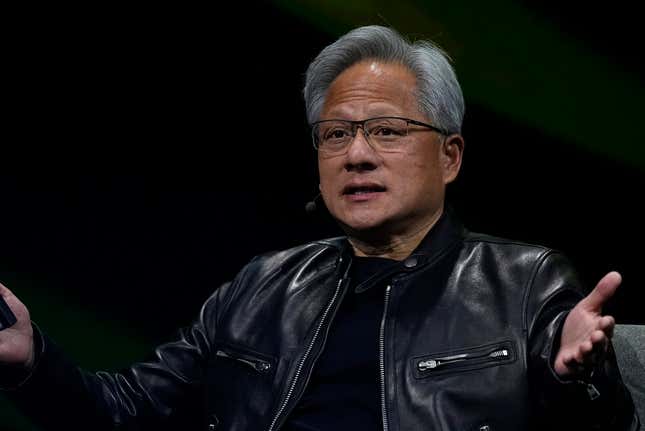
Nvidia is undoubtedly one of the biggest winners of the artificial intelligence boom — repeatedly beating estimates, (briefly) becoming the world’s most valuable company, and minting millionaire employees.
But when the king of AI chips beat earnings estimates again this week, its falling shares reflected unimpressed investors who want more.
The chipmaker reported record second-quarter revenue of $30 billion for fiscal year 2025 — up 122% from a year ago. Analysts had expected revenue of $28.7 billion for the second quarter — more than double its previous year revenue of $13.5 billion, according to FactSet.
Despite the beat, the chipmaker’s shares fell 6.9% in after-hours trading on Wednesday after the release — likely because it fell short of guidance expectations. Nvidia’s shares stayed down around 3.9% in pre-market trading Thursday, and remained in the red before recovering some on Friday.
The company set its third-quarter revenue guidance at $32.5 billion, plus or minus 2% — slightly above the average analysts were expecting, but below top end estimates.
“The market was clearly hoping for another blowout where expectations were pushed up yet again,” Richard Windsor, founder of research company Radio Free Mobile, said. However, Windsor thinks “Nvidia has much better visibility than it is implying,” and expects it to beat guidance with revenue of around $34 billion in the next quarter.
Thomas Monteiro, senior analyst at Investing.com, said in commentary shared with Quartz that while Nvidia’s results “indicate that the AI revolution remains alive and well, the smaller beat compared to the previous quarters adds to the multiple warning signs across the tech space earlier in this earnings season.”
Windsor offered a similar analysis, saying the market “wanted to see yet another beat and raise,” but that Nvidia’s “failure to get even bigger has allowed a sliver of doubt to creep in.”
The company’s stock is expected to be “volatile” due to the sales outlook, Bank of America research analyst Vivek Arya said in a BoA Global Research report on Wednesday. Jefferies analysts also noted Nvidia falling short of guidance expectations, but said in a note on Wednesday, “the important point is that the Blackwell delay is in the rearview mirror.”
Nvidia reported strong demand for its Hopper chips in the second quarter, and expects it will grow in the second half of the year. The company’s Hopper graphics processing units, or GPUs, are used for training and inferencing some of the world’s most powerful large language models (LLMs). Meanwhile, Nvidia shipped customer samples of its Blackwell AI platform during the second quarter, it said, adding that Blackwell’s production will ramp up in the fourth quarter into fiscal year 2026. Nvidia chief executive Jensen Huang previously said Blackwell would ramp up in the third quarter and be with customers in the fourth quarter.
As expenses grow for tech companies alongside rising prices for AI infrastructure, “companies are growing increasingly conscious of their margins when it comes to AI,” Investing.com’s Monteiro said, meaning customers “may need more time to get to the type of spending growth the market had previously predicted.”
While this doesn’t look good for Nvidia “given that the company can only benefit from a sense of urgency amongst other companies before the competition begins to catch up,” Monteiro said investors shouldn’t worry about a deeper selloff. Companies are still spending on data center chips “regardless of the costs on the other end of the balance sheet,” Monteiro said, and because Nvidia is “the sole owner of the market’s most valuable commodity,” it has the power to continuously change prices based on market demand.




